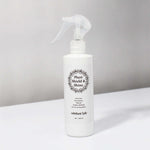Botanical name of the Venus Flytrap plant is Dionaea muscipula. It belongs to the sundew family and is native to subtropical wetlands on the East Coast USA, specifically in North and South Carolina. The Venus Flytrap is without a doubt the most famous carnivorous plant. This perennial plant is green on the outside and reddish lining on the inside. It lures the insect by secreting a fragrant nectar.
This little bug-eating plant is one of the "fastest" reacting and moving plants on earth. The Venus Flytrap has naturally grown in an harsh and poor soil environment, hence it gathers required nutrients for survival by trapping insects. The leaves of the Venus Flytrap have short, stiff hairs on the edge called triggers. The leaves open wide and when anything touches the triggers, the leaves reply shut trapping whatever is inside. But this is not your average insectivorous plant. This is an intelligent plant as the trap shuts only after two stimulations of the triggers in 20 seconds, saving itself from the accidental triggering of dust and wind debris.
The Venus Flytrap plant selects its prey. The leaves of the Venus Flytrap when shut have holes that can act as an escape room for small insects, as digesting them will not be worth the plant's efforts. The Venus flytrap primarily eats ants, but it will also eat flies, beetles, slugs, spiders and even tiny frogs.
Venus Flytrap Care Guide
Water
A good way to water this plant is using the bottom water technique. Let the pot sit in a tray filled with water up to maximum an inch of depth. This will ensure that the soil conditions are moist without overwatering the plant.
Soil
Light
Fertilizer
Heat and Humidity
The areas native to Venus Flytrap commonly see temperatures above 90°F during summer and hence they are very tolerant of heat. If you live in areas where the temperature in day goes higher in the summer, then use topwater technique to cool down the roots. Be careful to water the flytraps with cool distilled water to moderate the soil conditions and your plant will flourish!
Venus Flytraps love high humidity making terrarium a preferred home for them.
Do I have to feed my Venus Flytrap plant?
If you have located your plant outside then you do not have to worry about feeding it. The flytraps kept outdoors are self-sufficient in luring the insects and feeding themselves. If your plant is kept indoors, feed them with bugs (dead or alive). Please do not use any meat or food that the plant would naturally not eat. The traps start the digestion of the insects only after stimulating its triggers. Once the trap has trapped its prey, tickle the trap’s trigger hairs from between the gaps with a toothpick or cocktail stick. This will stimulate the trap and it will shut tighter starting the digestion process. Do not stimulate the traps if you’re not feeding them as the whole process consumes a lot of energy.
If you generally keep the plant feel free to switch the plant outdoors during summers and the plant will catch the bugs by itself when outside. It can also help with catching the bugs inside your house that may have developed around other plants.
Are Venus Flytrap plants safe?
Venus Flytraps are completely safe and pose no harm to humans or pets like cats and dogs. The Venus Flytrap bites on being triggered as it thinks it has captured a bug and tries to trap it. However, instead of a bug if you find your pet or kid’s fingers caught in the trap, do not worry it will be harmless.
As a measure of safety one of the best practices is to place this plant outside the reach of your pets or kids as the traps can permanently close if tickled or triggered many times without completing the process of digestion.
Why are the traps of Venus Flytrap turning black?
There can be a number of reasons why the trap can turn black. For one, as part of a plant's natural cycle, if it has digested plenty it will start to turn black. Another reason may be due to poor lighting or overwatering. Ensure your plant is placed in the most bright area (indoors or outdoors) of your house. Additionally, it is very easy to overwater this plant. Try to balance your watering schedule by keeping the soil moist but not waterlogged. Lastly, if you’re feeding the plant by yourself ensure the size of the bug is 1/3rd the size of the trap. If the bug is big and the trap cannot shut fully during digestion it can lead to blackening of the trap.
For any of the above reasons, you have black traps in your plant then do not worry. Just pick them off. So long as the plant is continuing to put out new growth to replace the old traps you can remove all the dead parts as this is part of the normal part of the plant's life cycle.
Where can I buy Venus Flytrap plant?
Shop The Venus Flytrap plants here. They're available in the following packaging based on your preference:
Nursery Pot - Standard plastic 2-inch planter pot that can be placed inside a larger pot or left as is until it outgrows it.
Clive Planter - This plant comes packaged in a white square porcelain planter pot ready for your home or office space with a bamboo tray to catch drips when watered.
All our plants are proudly grown and shipped from our indoor greenhouse in South Florida, USA.


